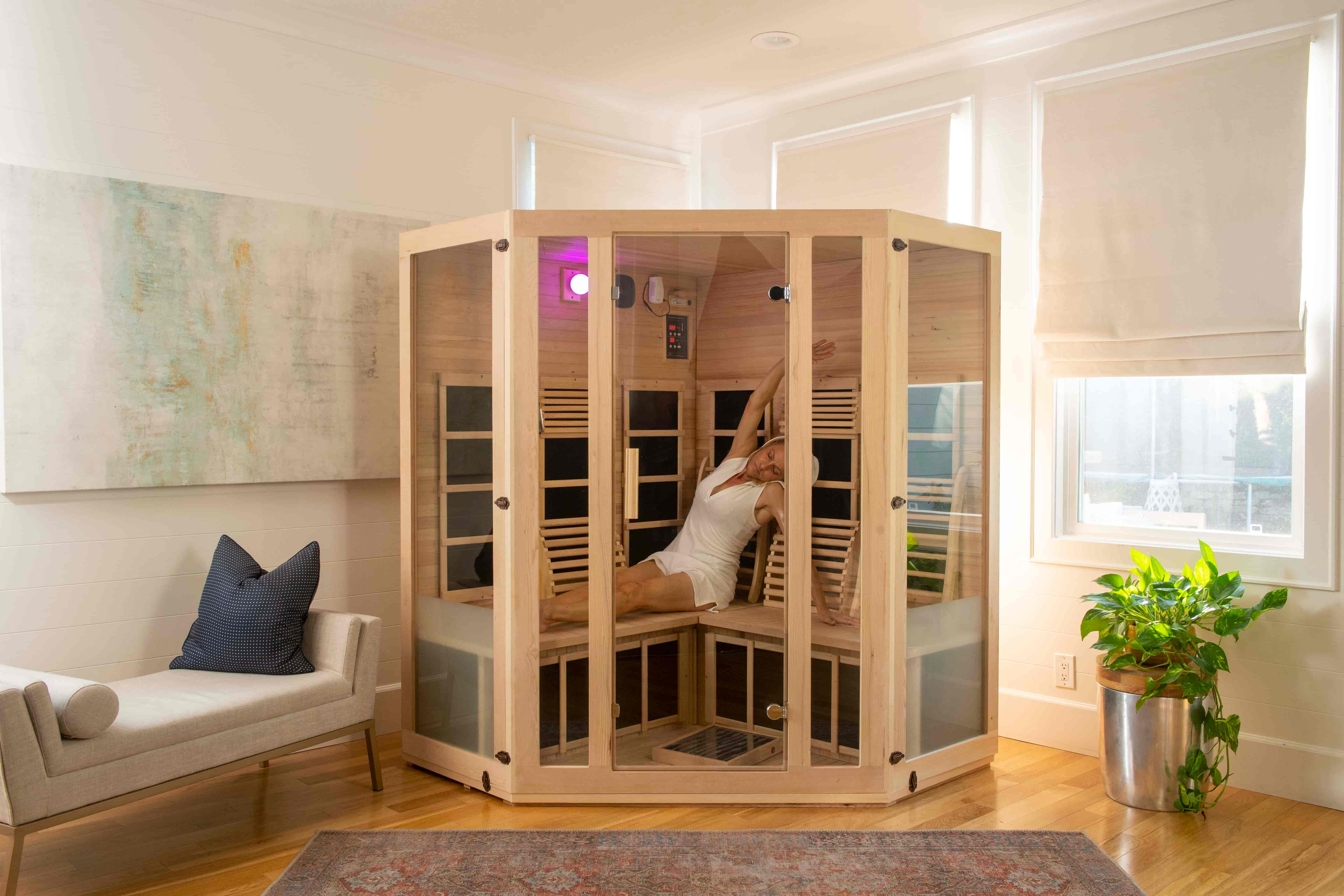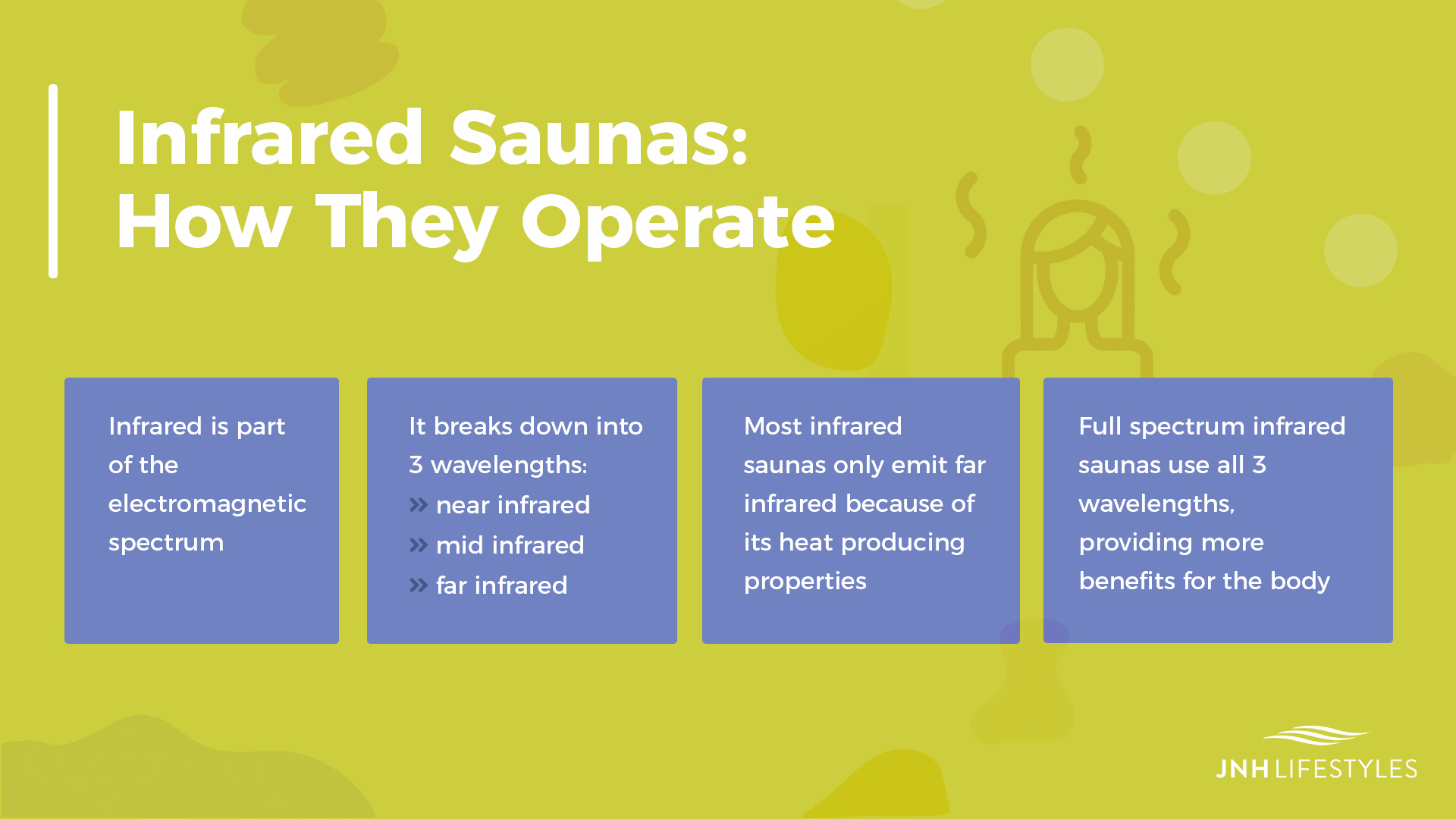What Is An Infrared Sauna & How Do They Work?
When someone mentions a sauna, the first thing that comes to mind is a stuffy and hot space where you go to sweat, which has a ring of truth to it. Saunas have been present in human history in one form or another for thousands of years, since the Ancient Greeks and Romans. In some cultures, they had spiritual symbolism, like Native American sweat lodges. Mostly, they were used for sweating to cleanse the body of toxins.However, modern times brought new technologies into human existence, and saunas have remarkably evolved into an accessible resource to improve everyday life.
Enter infrared light,which has been causing quite a stir in the wellness community for years.Its therapeutic properties are well-documented through studies and research [1], allowing it to be used for commercial purposes, like in personal infrared saunas. You can normally find this type of sauna in spa centers, gyms and wellness resorts all over the world as the latest trend for treating the body and mind. Now available as in-home devices, you can harvest all their benefits whenever you want without even having to leave your house.
Understanding Infrared Light
Before digging into infrared therapy benefits, it’s important to know something about these type of light waves. Infrared light is a more than two centuries old discovery by British astronomer Sir Frederick William Herschel. You can’t see it with the naked eye, but you can feel it as heat. Moreover, it has been in use for decades by various industries for diagnostic tools, appliances and many other useful purposes. Having said that, there are three types of infrared light: near infrared, mid infrared, and far infrared — each having positive effects on the human body.
Near infrared light penetrates the skin to the epidermis with wavelengths from 50,000 to 1,000,000 nm. It’s the shortest of the three and the closest to visible light. It has one distinguishable difference from other types of infrared light — it doesn’t emit detectable heat, but that doesn’t prevent it from having therapeutic benefits [2]. Mid infrared is used for laser technology and a wider range of medical conditions since it penetrates deeper under the skin. It operates with wavelengths from 3,000 to 5,000 nm and it has promising success in the anti-age industry since it increases the production of collagen and lessens fine lines known as rhytides [3].
Far infrared has the most therapeutic applications since it heats the body from the inside [4]. This is possible because this infrared light penetrates the body deeper than the others, all the way to the fat tissue, with wavelengths from 780 to 3,000 nm. Sweating is the most common result of being exposed to far infrared, allowing the body to flush out toxins through the skin and help the kidneys and liver with detoxification [5]. It can also improve blood flow and increase circulation to all parts of the body which can, in turn, reduce cardiovascular risks and oxygenize the organs [6].
Infrared Saunas And How They Work

The best way to understand how infrared saunas work is by knowing the principles of a traditional sauna, that is, the differences between the two. One of the easily experienced infrared sauna benefits is that the air in the cabin is not heavy, which allows you to breathe comfortably and have longer sessions. This happens because infrared heats the body from the inside while only slightly increasing the temperature in the cabin. Traditional saunas heat the body from the outside by raising the temperature of the room, which is why many people find them uncomfortable and cannot spend more than a few minutes inside.
Since infrared is technically a form of radiation, you are probably wondering whether infrared saunas are bad for you, and the answer is simple: no, they're not. Over the years, there have been numerous studies showing the enormous health benefits of infrared therapy, from helping with weight loss [7] to boosting the immune system [8]. So, whether infrared saunas are healthy depends solely on their use as per the manufacturer’s instructions, like any other appliance in the household.
Bringing Health And Comfort Together
Infrared saunas are a wonderful way to create a spa-like atmosphere in your home that can have positive outcomes for your physical and mental health. If you are trying to change your lifestyle for the better, using infrared therapy can be a valuable tool to attain this goal, especially if you have certain underlying health conditions, like chronic back pain [9].More importantly, an in-home infrared sauna allows you total control of the time you can dedicate to your health and relaxation.

Resources
[1] Shang-Ru Tsai and Michael R Hamblin. (2017).“Biological effects and medical applications of infrared radiation.” ncbi.nlm.nih.gov, National Center for Biotechnology Information, May 2017, https://www.ncbi.nlm.nih.gov/pmc/articles/PMC5505738/.
[2] Whelan HT,et al. (2001). “Effect of NASA light-emitting diode irradiation on wound healing.” ncbi.nlm.nih.gov, National Center for Biotechnology Information, December 2001, https://www.ncbi.nlm.nih.gov/pubmed/11776448.
[3] Elizabeth L. Tanzi, et al. (2003). “Treatment of Facial Rhytides With a Nonablative 1,450‐nm Diode Laser: A Controlled Clinical and Histologic Study.” onlinelibrary.wiley.com, Wiley Online Library, February 2003,https://onlinelibrary.wiley.com/doi/abs/10.1046/j.1524-4725.2003.29046.x.
[4]Fatma Vatansever and Michael R. Hamblin. (2012). “Far-infrared radiation (FIR): its biological effects and medical applications.” ncbi.nlm.nih.gov, The National Center for Biotechnology Information, October 2012, https://www.ncbi.nlm.nih.gov/pmc/articles/PMC3699878/.
[5] Sears, Margaret E, et al. (2012).“Arsenic, Cadmium, Lead, and Mercury in Sweat: A Systematic Review.” ncbi.nlm.nih.gov, National Center for Biotechnology Information, February 2012, https://www.ncbi.nlm.nih.gov/pmc/articles/PMC3312275/.
[6] Beever Richard. (2009). “Far-infrared saunas for treatment of cardiovascular risk factors.” ncbi.nlm.nih.gov, National Center for Biotechnology Information, July 2009, https://www.ncbi.nlm.nih.gov/pmc/articles/PMC2718593/.
[7] Kim, Sungwoon, et al. (2017). “Does treadmill walking with near-infrared light applied to the abdominal area reduce local adiposity and body weight?” ncbi.nlm.nih.gov, National Center for Biotechnology Information, October 2017, https://www.ncbi.nlm.nih.gov/pmc/articles/PMC5684004/.
[8] Seung YoonCeline Lee, et al. (2011). “Enhancement of cutaneous immune response to bacterial infection after low-level light therapy with 1072 nm infrared light: A preliminary study.” www.sciencedirect.com, Science Direct, December 2011, https://www.sciencedirect.com/science/article/abs/pii/S1011134411001989.
[9] Mero, Antti, et al. (2015). “Effects of far-infrared sauna bathing on recovery from strength and endurance training sessions in men.” ncbi.nlm.nih.gov, National Center for Biotechnology Information, July 2015, https://www.ncbi.nlm.nih.gov/pmc/articles/PMC4493260/.
[10] Gale, George D,et al. (2006). “Infrared therapy for chronic low back pain: A randomized, controlled trial.” ncbi.nlm.nih.gov, National Center for Biotechnology Information, 2006, https://www.ncbi.nlm.nih.gov/pmc/articles/PMC2539004/.

